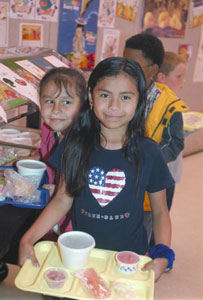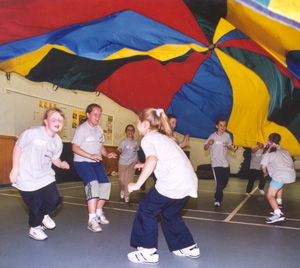 The fact that our nation’s schools need a revamp on their school lunch and physical activity programs is not new information. Thankfully now there’s more to report than just stating the need for change.
The fact that our nation’s schools need a revamp on their school lunch and physical activity programs is not new information. Thankfully now there’s more to report than just stating the need for change.
Recently the USDA recognized over a thousand schools for their improvements to nutrition and physical education programs. Five traits were highlighted to describe what a healthy American school looks like today.
One trait of a healthy school is their stellar performance in the National School and Lunch Program. The voluntary program is part of First Lady Michelle Obama’s Let’s Move campaign that is attempting to end childhood obesity within a single generation.
For schools to be a certified member of the National School and Lunch Program they must follow nutritional guidelines. A different vegetable must be provided each day at lunch, one serving of beans or peas must be served weekly, a different fruit is to be offered each day of the week, whole grains are to be served 3 to 5 days a week, and only low-fat or fat free milk products are offered to students on the program.
As far as the physical guidelines, schools must educate about nutrition, provide plenty of physical activity time, and put vending machine food guidelines in place. As these guidelines are met and exceeded, schools may apply for certification. All levels of certification provide cash incentives back to the schools.
Along with participating in the National School Lunch Program, another trait of healthy schools is the revamping of school menus and kitchens. Examples include using a spring mix of dark leafy greens verses ice burg lettuce for more nutrients, using homemade whole grain croutons, reducing the salt in meals by replacing it with flavorful herbs and probably the most important step, removing fryers and replacing them with combination ovens.
A third trait among the healthy schools was getting kids involved in the school lunch program and getting them eating the healthy food. This task has been accomplished in many ways however one of the most effective techniques is the same junk food companies use: great advertising. Relevant and exciting programs were brought into the schools to get children excited about good nutrition. One act in particular is the Jump with Jill Show. Jill Jayne, RD is known as the “rockstar nutritionist.” Her show has great music, upbeat dance moves, and she has a cool wardrobe that kids respond to, just like the sugar cereal commercials. However Jill gets them all excited and on the same page about good nutrition.
 A fourth trait of healthy schools is that they keep it local. Instead of sourcing out the food and resources, healthy schools are getting great help right in their own neighborhood. Schools are finding it easier to partner with local or regional healthy food manufacturers and local resources are easily available as well. Schools are finding grants from their local health departments and partnerships with hospitals for dietitian expertise.
A fourth trait of healthy schools is that they keep it local. Instead of sourcing out the food and resources, healthy schools are getting great help right in their own neighborhood. Schools are finding it easier to partner with local or regional healthy food manufacturers and local resources are easily available as well. Schools are finding grants from their local health departments and partnerships with hospitals for dietitian expertise.
A fifth trait of healthy schools is allowing the children to serve themselves verses serving a pre-portioned meal. Especially in elementary schools, the self serve bars are found to be highly effective in getting children to eat healthy foods. As the children have been taught through the nutrition education what is healthy and the kitchens are committed to less sugary and processed food, putting the child in charge of their meal has been found to be successful.
As the number of schools who are improving and meeting the program standards continues to grow, this is a breath of fresh air. While there is still much work to do for our kids, it’s great to know that the army of those committed to change is growing everyday.
Via: MSN
Also Read:
